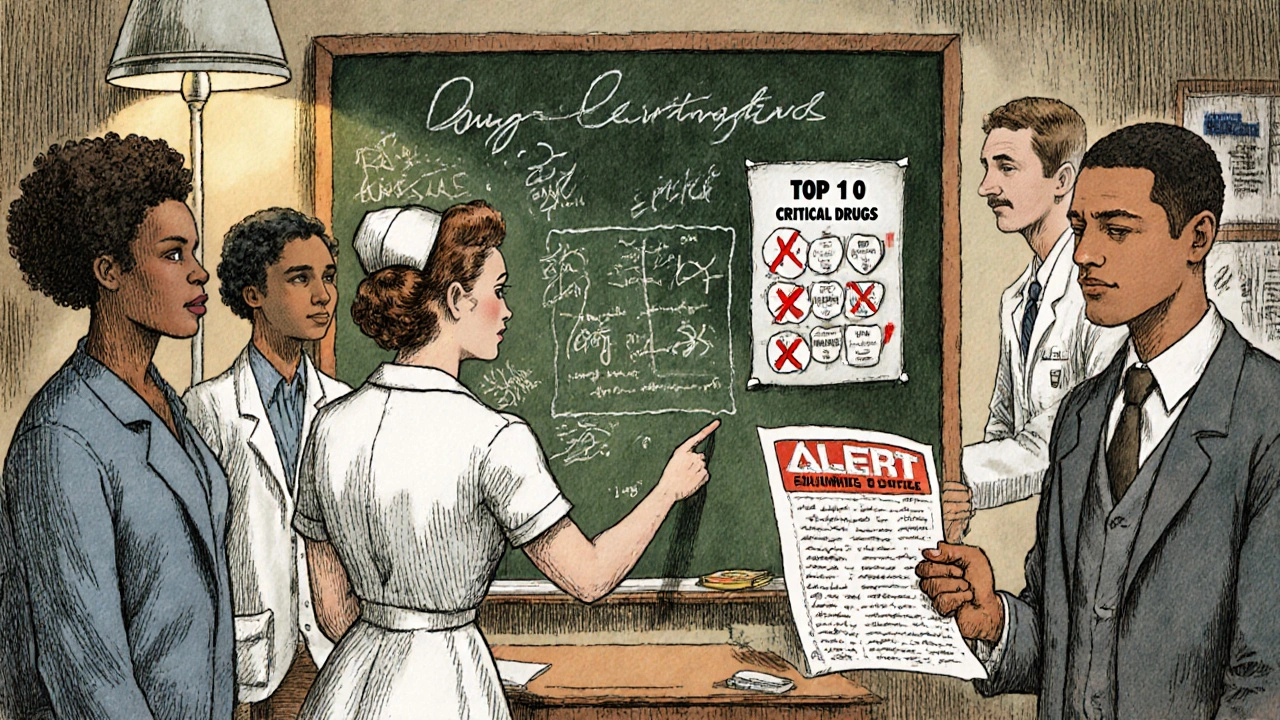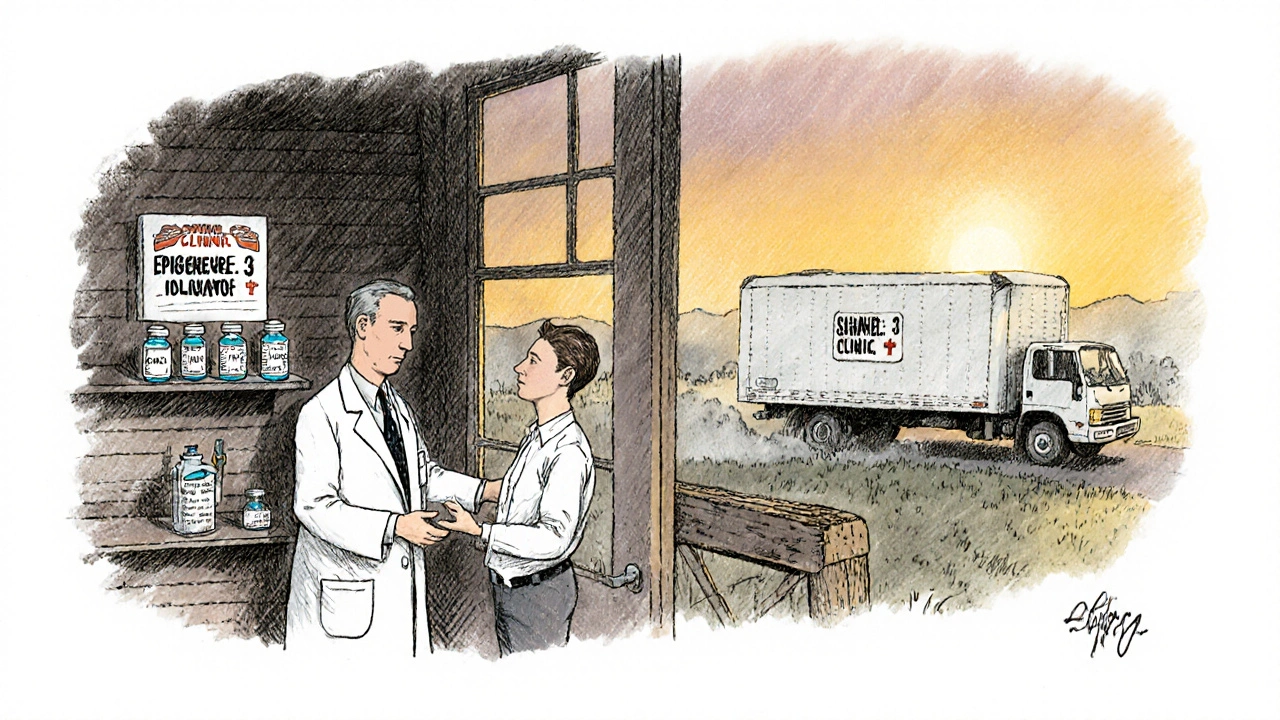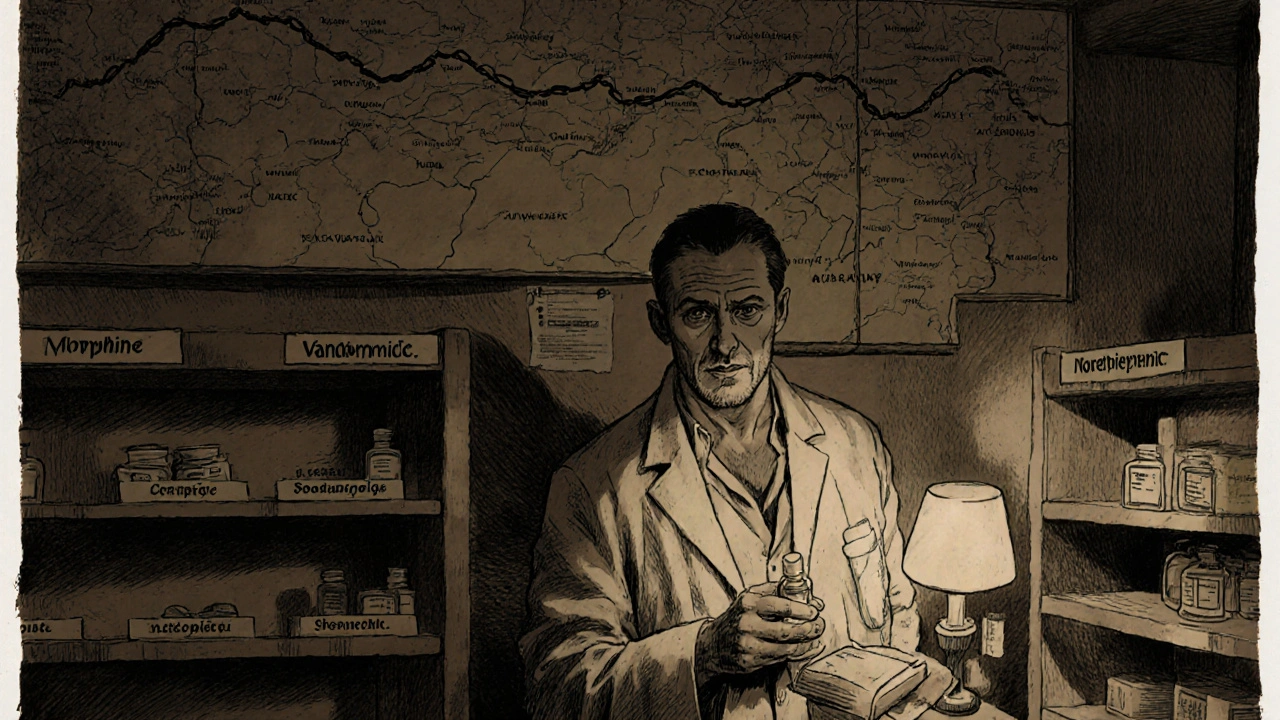Medication Shortage Alternative Calculator
Substitute Your Critical Medication
Recommended Substitution
When your hospital runs out of morphine, or the IV antibiotics your patient needs don’t arrive, it’s not just an inconvenience-it’s a crisis. Medication shortages aren’t rare glitches anymore. They’re a persistent, growing threat to patient care across the U.S. and beyond. In 2022, the FDA recorded 287 drug shortages, affecting nearly one in five essential medications in hospital formularies. And it’s not just obscure drugs-these are the life-saving ones: cancer treatments, antibiotics, anesthesia agents, saline solutions, and pain meds. When they vanish, doctors, nurses, and pharmacists are left scrambling. This isn’t theoretical. It’s happening in your clinic, your pharmacy, your ICU right now.
Why Do Medication Shortages Happen?
The root causes are systemic, not accidental. About 46% of all shortages in 2022 came from manufacturing quality failures-contaminated batches, equipment breakdowns, or unapproved process changes. These aren’t minor issues. They’re often tied to facilities that produce generic sterile injectables, which make up 63% of all shortages. These drugs are cheap to make, but expensive to produce safely. A single vial might sell for $2, but the cleanroom, testing, and compliance costs can run into millions. When profit margins are thin, cutting corners becomes tempting-and dangerous.
Then there’s the supply chain. Over 80% of the active ingredients in U.S. drugs come from overseas, mostly China and India. A flood in India, a lockdown in China, or a regulatory inspection delay can ripple across the entire system. And because many of these drugs are made by just three manufacturers controlling 75% of the market, there’s no backup. One plant shuts down? The whole country feels it.
Even reimbursement policies play a role. Medicaid’s inflation rebates and 340B program pricing make it hard for manufacturers to raise prices-even when costs go up. If they can’t recover expenses, they stop producing. Why invest in reliable equipment if you’re not allowed to charge enough to cover it?
Who Gets Hit Hardest?
It’s not evenly distributed. Rural hospitals, safety-net clinics, and facilities serving Medicaid or uninsured patients bear the brunt. A 2023 American College of Physicians study found that 78% of these facilities had to cancel or delay procedures because of drug shortages. In urban teaching hospitals, they might have access to expensive alternatives or specialty pharmacies. In a small town? Not so much.
Patients with cancer, chronic pain, or critical illnesses are the most vulnerable. Oncology drugs had the longest average shortage duration in 2022-14.3 months. That’s over a year without the standard treatment. Nurses reported waiting an extra 22 minutes on average just to get a medication delivered. Pharmacists worked 12.7 extra hours a week just to track down substitutes. And when substitutes are used, errors rise. One Reddit pharmacist shared how switching from morphine to hydromorphone led to a 15% spike in dosing mistakes.
What Can You Do When a Drug Disappears?
Reacting after the shortage hits is too late. The key is preparation. Hospitals that survived the worst of the 2020-2022 shortages had one thing in common: they had a shortage management team in place before the crisis.
Here’s what that team needs:
- A pharmacy specialist who tracks supplier alerts daily
- A purchasing officer with authority to buy alternative products within 72 hours
- An IT person who logs every medication error before, during, and after a shortage
- A nurse who maps out how workflow changes affect patient care
- A risk manager who assesses safety impacts within 24 hours
- A communicator who updates staff within 4 hours of any decision
This isn’t bureaucracy-it’s survival. The Mountain Plains Regional Drug Handicapping and Rehabilitation Services (MPRDHRS) project showed that hospitals with this structure reduced medication errors by 33% during actual shortages.

Alternatives Aren’t Always Safe-Here’s How to Choose Wisely
When your morphine runs out, you might reach for hydromorphone. But it’s five to seven times more potent. A nurse used to dosing morphine might accidentally give too much. That’s not a substitution-it’s a risk.
Always ask:
- Is this drug bioequivalent? (Same active ingredient, same dose, same route)
- Is it approved for this use? (Off-label use increases liability)
- Do we have clear protocols for dosing and monitoring?
- Have we trained staff on the difference?
Some alternatives are straightforward. If you’re out of vancomycin, you might switch to linezolid. But if you’re out of norepinephrine for septic shock? There’s no easy swap. You might have to use phenylephrine-but it’s less effective at improving cardiac output. That’s not just a change. It’s a compromise that could cost lives.
Buffer Stock: The Hidden Lifeline
ASHP recommends keeping 14 to 30 days of buffer stock for critical drugs. But most hospitals can’t afford it. Sixty-five percent of safety-net hospitals only keep 8 to 12 days’ worth. That’s barely enough to ride out a minor delay.
Here’s what works: prioritize based on impact. Stockpile drugs that:
- Have no alternatives
- Are used in life-threatening conditions
- Have long lead times to reorder
For example: epinephrine, insulin, heparin, lidocaine, and calcium chloride. These should be on your top-10 list. If your budget allows, consider sharing buffer stock with nearby clinics. Some regions have formed cooperative purchasing pools to stretch limited funds.

What’s Being Done to Fix This?
There are signs of change. In 2022, HHS created a new role: Supply Chain Resilience and Shortage Coordinator. Their job? To connect FDA, CDC, and CMS so shortages aren’t handled in silos. The FDA’s draft guidance on Risk Management Plans (expected to finalize in 2024) will require manufacturers to map their supply chains and identify single points of failure. If they don’t, they’ll be publicly listed as high-risk suppliers.
Germany and France have mandatory reporting systems. When a manufacturer sees a shortage coming, they must notify the government within 48 hours. That’s cut shortage duration by 37% compared to the U.S., where only 65% of manufacturers report voluntarily.
Some experts are pushing for Medicare reimbursement reforms. Right now, doctors get paid the same whether a drug is $1 or $100. If reimbursement rewarded reliable suppliers-say, a bonus for drugs with zero quality issues in the past year-manufacturers would have real incentive to invest in better equipment and redundancy.
What You Can Do Today
You don’t need to wait for policy changes to act. Start here:
- Check the FDA’s Drug Shortage Database daily. It’s updated in real time.
- Build a list of your top 10 critical drugs and their approved alternatives.
- Train your team on how to safely switch between them.
- Start a simple log: when a shortage was identified, what was done, what errors occurred.
- Advocate for a small buffer stock-even 5 extra vials of a key drug can buy you time.
Medication shortages aren’t going away. But they don’t have to mean worse care. With planning, communication, and smart alternatives, you can protect your patients-even when the system fails.
What should I do if my hospital runs out of a critical drug?
First, check the FDA’s Drug Shortage Database to confirm the shortage and find approved alternatives. Then, activate your shortage response team. Don’t guess-use your pre-approved substitution protocols. Document every change, monitor patients closely for adverse effects, and notify staff immediately. If no safe alternative exists, delay non-urgent procedures and escalate to regional pharmacy networks or HHS for assistance.
Are there any drugs that can’t be substituted safely?
Yes. Some drugs have no bioequivalent alternatives, especially complex biologics, certain oncology agents, and narrow-therapeutic-index medications like heparin, digoxin, and warfarin. Even small changes in formulation or delivery can cause serious harm. For these, you must wait for supply to resume or seek emergency access through HHS or the manufacturer’s patient assistance program. Never substitute these without explicit clinical guidance and documentation.
How do I know if a drug shortage is temporary or long-term?
The FDA database includes estimated resolution dates, but these are often optimistic. Look for patterns: if the same drug has been in shortage for over six months, or if multiple manufacturers report delays, it’s likely long-term. Check manufacturer communications and pharmacy bulletins. If no clear timeline exists, assume it’s ongoing and plan accordingly-don’t wait for official confirmation.
Can I order drugs from international pharmacies during a shortage?
Legally, importing prescription drugs from international pharmacies is prohibited in the U.S. unless under very limited FDA exceptions (like for personal use with a valid prescription). Even then, there’s no guarantee of safety, potency, or sterility-especially for injectables. The risk of counterfeit or contaminated products is high. Stick to U.S.-approved sources, even if it means delays. Patient safety outweighs convenience.
Why aren’t there more manufacturers making these critical drugs?
Generic injectables are low-margin, high-compliance products. The cost to build and maintain a sterile manufacturing facility runs into hundreds of millions. With Medicaid and 340B rebates capping prices, manufacturers can’t earn enough to justify the investment. Only a few companies dominate the market because it’s financially risky for others to enter. Until reimbursement models change to reward reliability-not just low cost-this problem won’t be solved.
What’s the difference between a drug shortage and a drug recall?
A recall happens when a drug is defective or unsafe and is pulled from the market. A shortage means the drug is safe but unavailable due to manufacturing, supply chain, or distribution problems. You might see both at once-like when a contaminated batch is recalled, and no other supplier can fill the gap. Always check the reason behind the shortage before assuming it’s a recall.
Next Steps: Build Your Plan Before the Next Crisis
Don’t wait for the next shortage to hit before you act. Start small. Pick one critical drug your facility uses regularly. Find its alternatives. Train two staff members on how to switch safely. Track any errors that occur. Share your findings with your pharmacy team. Repeat with the next drug.
Medication shortages are a systemic problem-but they’re managed one hospital, one team, one decision at a time. The tools are available. The data is public. The only thing missing is the will to prepare. Your patients deserve better than reactive panic. Build your plan today.


Write a comment